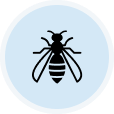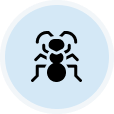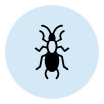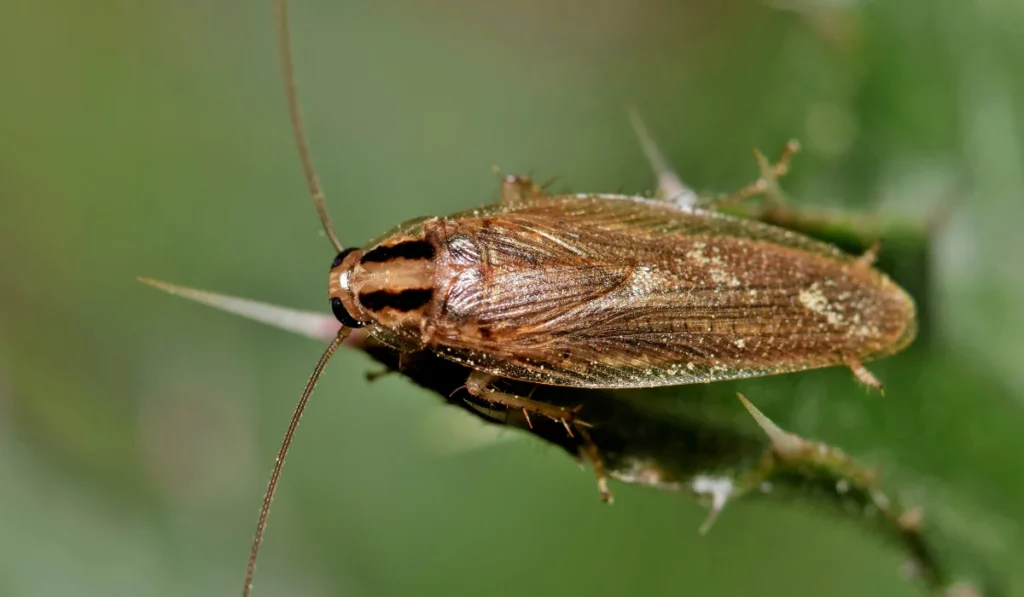Gophers are an unfortunately common lawn pest in California. If one of the state’s five native species of gophers have invaded your yard, it’s essential to take action before these rodents cause serious damage.
Below is a breakdown of the gophers you might find in your yard and humane ways to deal with these pests (before you take the step to invest in a professional pest control service).
Key Takeaways
- There are many species of gophers native to California, including pocket gophers, Botta’s pocket gophers, Fresno pocket gophers, and plains pocket gophers.
- Gophers can cause severe and costly damage to your yard by leaving behind holes and dirt mounds, eating plants and roots, and biting through electrical wires or water pipes.
- To prevent or stop a gopher infestation, you can try plants that repel gophers, a lined trench, a sonic spike, the trap and release method, or (as a last resort) poisonous bait.
Types of Gophers in California
California is home to a variety of types of gophers. Below is information on each type of gopher native to California so you can identify any gophers you may spot in your yard.
Pocket Gophers
Named for their fur-lined cheek pouches, these rodents live a burrowing (fossorial) lifestyle in which they forage underground. Their cheek pouches are used for food storage and transportation (they typically hold scraps of plants).
Ranging from 5-14 inches in length, pocket gophers also have clawed front paws that they use to dig gopher burrows and sensitive whiskers and tails built to navigate underground tunnels.
Pocket gophers can terrorize your yard by leaving dirt “gopher mounds” and feeding on garden plants. Generally solitary animals, pocket gophers come together in the spring and summer months for breeding season and have a lifespan of about three years
Often confused with moles, pocket gophers can be identified by their “buck teeth” incisors, visible albeit small eyes, and tunnel systems that do not protrude from the ground.
Botta’s Pocket Gopher
The most common gopher in California, Botta’s pocket gophers are also referred to as “valley pocket gophers.” These rodents are named in honor of Paul-Émile Botta, an archaeologist who collected mammals in California throughout 1827 and 1828.
Medium in size compared to other pocket gophers, Botta’s pocket gophers range from 6-10 inches in length. Solitary, territorial, and herbivorous, Botta’s pocket gophers behave similarly to all other pocket gophers, burrowing and foraging for plants in underground tunnels.
Fresno Pocket Gopher
Most common in the San Joaquin Valley, as well as the bottom lands around the Merced River bordering on Yosemite, the Fresno pocket gopher is particularly long with a whitish tail and dull brown fur around its mouth.
Behaving similarly to other pocket gopher species, Fresno pocket gophers are particularly troublesome in gardens and alfalfa fields.
Plains Pocket Gopher
Brown and gray (like soil) in color, the plains pocket gopher tends to be bulky and stout with a short, tapered, nearly naked tail. These prairie rodents are abundant across the Great Plains region of the country, but can also be found in California.
They operate on a bimodal schedule, meaning they sleep twice (they’re most active for a few hours in the afternoon and then again at night). Plains pocket gophers spend the vast majority of their time in their nests, only emerging to seek food or a mate.
Damage Caused by Gophers
Gophers may be small, but they can cause significant damage to your home and yard. Below is a breakdown of the hardship a gopher infestation may cause your family and pets.
Environmental
Not only can gophers ruin your garden and leave unsightly holes and dirt mounds in your yard—they can also cause more serious environmental damage.
For instance, gophers may prune, eat, or expose tree roots when burrowing, or even “girdle” or clip tree stems. This can be harmful to trees and seedlings and even kill them (gophers are known to kill oak seedlings in particular).
Gophers can kill your grass by feeding on the roots and may also damage your underground water pipes and/or electrical cables. Their feeding may create competition with other animals and livestock in the area, and their burrows may attract spiders and other insects and pests to your yard.
Gophers may cause a foul odor around your home and can even carry diseases like rabies and monkeypox. Although they don’t typically come into direct contact with humans, they may interact with your pets or other animals in your yard.
Financial
Damage from gophers can be costly. You may need to pay for landscaping, gardening, or even electrical cable and water pipe repair (otherwise, you may experience a power outage or temporarily lose water supply).
Should a gopher infect or harm your pet, you’ll also face veterinary bills. Maintaining a gopher-infested property quickly becomes quite expensive, and only gets worse as the gophers multiply.
Getting Rid of Gophers
There are many ways to prevent a gopher infestation (or to stop a budding one in its tracks). Read on for some of the most effective methods.
Plants that Deter Gophers
Certain plants deter gophers from entering your yard. These include “gopher spurge” (a sprawly, succulent-type herb), crown imperials, rosemary, lavender, marigolds, salvia, catmint, and oleander.
Certain other plants won’t repel gophers, but are not appetizing to them either–so if you plant daffodils, onions, or garlic, your garden should be safe from gopher thieves.
Lined Trench
Another way to keep gophers out is to build a trench at the edge of your yard (at least two feet deep and 18 inches wide) that will intercept them as they burrow their gopher tunnels. You can add cans to the trench to act as traps, or line it with a wire or mesh barrier to keep gophers out.
Sonic Spike
A sonic spike is a battery-powered device that humanely deters gophers (and other tunneling animals like moles) away from your yard by emitting sonic frequencies. These sounds and vibrations (undetectable to humans) penetrate the burrow systems in specified intervals, driving the pests away.
Trap and Release
One method of removing gophers from your yard is a simple trap and release. This process involves setting a gopher trap with bait (a plant that the gopher has been eating). Try to make the food source scarce in the rest of your yard in order to make the bait seem more appealing.
Check the trap twice a day to see if a gopher has wandered in, and if one has, gently release the gopher in a new location far from your neighborhood (contact animal control authorities for advice on where to release a gopher in your area).
Poison (Last Resort)
A less humane option to be used as a last resort is poisoning the gophers that have infested your yard. Available online or at your local hardware store, gopher bait is usually pellets or grains that have been treated with a toxic chemical like strychnine. Spreading it in your yard will cause gophers to ingest it and die, as it looks like food to them.








